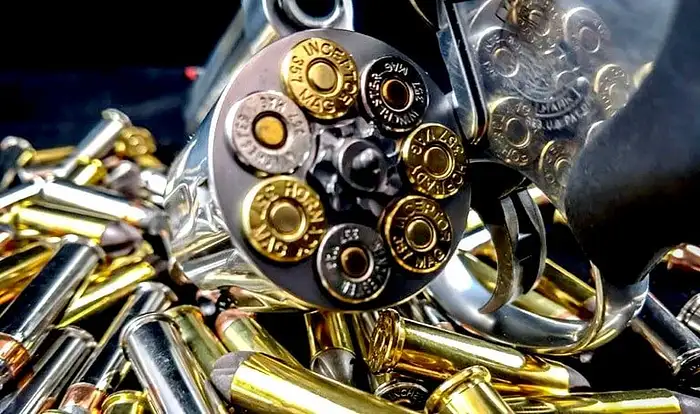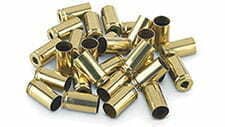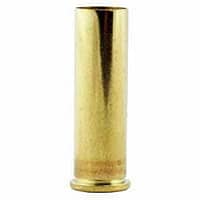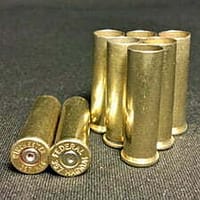In 1935, the .357 Magnum was launched. This was the most explosive handgun round available at the time. That remained true until 1955 when the .44 Magnum was introduced. Several rounds have since surpassed it in terms of power. Nevertheless, the 357 Magnum Brass For Reloading is still valuable and successful ammunition.
In this article, we’ll look for the best 357 magnum brass for reloading. Let’s break down the bullets because there are so many of them. Cast loads will be enough for the vast bulk of shooting. But before that, we will go through a brief about magnum brass.
Related Reloading Post
Best 357 Magnum Brass For Reloading

1. Winchester .357 Magnum Brass for Reloading
Many shooters and competitive hunters use Winchester Unprimed Brass Rifle Cartridge Cases – 100/box for high-quality. Cases are annealed during production to provide the proper toughness, which keeps the bullet firmly in place while yet allowing for flexibility upon firing. As a result, there may be a little stain near the neck, just in case. Due to production or shipping issues, some cases come with defective mouths. The mouth must be resized, chamfered, and deburred before reloading. If desired, an expansion ball can be inserted into the neck following the size die.
PROS:
- Winchester brass is a terrific way to get started with high-quality ammunition.
- They have uniform dimensions, are clean, and are ready to load.
- There aren’t any dents or other flaws which some brass has.
- Primer chambers are consistent, and primers sit evenly.
CONS:
- Pricey, according to many customers
2. Starline .357 Magnum Brass for Reloading
The .357 Magnum, which is essentially a more extended version of the .38 special, is among the most famous handgun calibers worldwide.
This chambering is available from almost every revolver maker.
Many lever-action carbines employ this as well.
PROS:
- It is professionally manufactured and constant in length.
- The flash apertures are neat and punched with next to no roughness.
- The best quality is available.
CONS:
- A little more substantial
3. Remington .357 Magnum Brass for Reloading
Remington cartridge casings are made of specifically alloyed brass that is meticulously drawn to offer constant interior volume and resistance to stretching and brittleness.
Primer pocket specifications are kept to .001″, and case neck annealing is rigorously controlled for simpler resizing and extended reloading life.
PROS:
- Excellent service, pricing, and product; nickel .357 magnum casings look fantastic when loaded with your preferred bullet!
- The size of the flash holes is inconsistent.
CONS:
- They all required trimming, which is standard for fresh brass, but the lengths were inconsistent.
4. .357 Magnum Brass by DiamondKBrass
DiamondKBrass sells .357 Mag once-fired brass that is ready to ship. DiamondKBrass offers once-fired 357 Mag brass that has been cleansed of any contaminants. Once fired, .357 Mag brass will have a mix of manufacturer handstamps.
DiamondKBrass is recognized for carrying the best brass on the market. Its customer service is unrivaled in the business.
PROS:
- Brass of exceptional grade.
- The brass was prepared to reshape and de-prime after the pre-tumble.
- After cleaning, they look brand new.
- Reloading is enjoyable.
CONS:
- Issues with pricing
5. .357 Magnum Brass by Everglades Ammo
This brass is 9mm range brass that has been cleaned and treated. Headstamp brass from civilian and local police ranges has been sorted. Some companies use a dust-free cleaning method that polishes the casings while removing dirt, sand, and other foreign materials.
A commercial processing machine inspects the brass for cracks and other items, then deprives, swages resize, and base sizes it. This brass has been treated and cleaned the same way as the brass used in our remanufactured 9mm ammunition.
PROS:
- Very tidy
- Nice appearance
- It is by far the finest reloading brass; it’s incredibly clean and simple to work with.
CONS:
- It might become trapped in the powder funnel.
About Brass and Magnum Brass

Brass is basically a copper-based alloy. Usually, it is a copper and zinc alloy combination. Other metals are combined to bring varieties in colors and features. Iron, aluminum, silicon, and manganese are the common metal combined with copper and make different brass types. These combinations come with a variety of functions. Common types are 330 brasses, 340 brass, 464 brass, yellow brass, and red brass.
Reloading faces high corrosion, high heat, and stress. Brass is capable of resistance to high corrosion and stress. Besides these, brass has some other fantastic features. Its castability is very high. Its level of thermal conduction is higher than the average expectation. It also has a ferromagnet feature. While separating brass for recycling purposes, this feature makes it comparatively easier. Due to all these brass varieties and functions, brass applications are also variant. Musical instruments, plumbing works, decorative items, ammunition applications, and many more. You will also see naval brass and admiral brass in the market.
Now, along with types, brass also has different levels. White brass, alpha brass, beta brass, and alpha-beta brass. These brasses are alloys of different percentages of zinc and copper. White brasses hold 40% zinc, which is not applicable in cold or hot situations.
You might think that this is getting boring. But we are heading to our point now. Alpha brasses hold less than 40% zinc. Usually, the percentage is 36-39. It is workable in situations where cold is the requirement. Pins, bolts, screws, and ammunition cartridges are application fields for alpha brasses.
On the other hand, beta brass is less pliable. It has 45%-50% of zinc content. But it is workable in a high-temperature environment. Now, the alpha-beta brass has 35%-45% zinc content. This is an optimum and effective brass type, which is also more suitable for ammunition applications. Cartridge cases are made of brasses. The level of different brass shows you how much powder a cartridge can hold.
Frequently Asked Questions
Is the 357 SIG as Effective as the 357 Magnum?
Ans: Because full-power ammunition drives a 125-grain bullet 100 feet per second quicker than 357 SIG in barrels of the same length, the 357 Magnum wins. It’s that easy. Full power comparison.
Which Grain is Optimal For a .357 Magnum?
Ans: The 110 to 125-grain JHP rounds are the most effective. These bullets expand swiftly, fracture, and provide an efficient wound channel at 1,300 to 1,440 fps. At 1,380 fps, the Hornady Critical Defense does not fragment and achieves a remarkable balance of extension and penetrating.
Which .357 Magnum Load is the Strongest?
Ans: Bullets from 110 grains to 180 grains are available for the 357 Magnum. The full house 125 GRN JHP is often recognized as the greatest self-defense round of that caliber.
What Sort of Lifespan of a Case Should be Expected?
Ans: It actually depends on how the user is loading. Keeping it in mid to low will keep the longevity. Due to the high longevity, intact cases will stay 30 years, and you will still be able to reload with them.
Which Brass Should be Picked For Light and Medium Pressure Loads?
Ans: Starline is a very good choice for this type of load. It is light and also very consistent. These features help you to load easily.
Conclusion
Since 1935, the.357 Magnum has always been the true “do it all” handgun cartridge. It’s strong, adaptable, accessible, and precise. It may either provide you with venison or protect your life. Anyone who carries a.357 Magnum is quite well.





